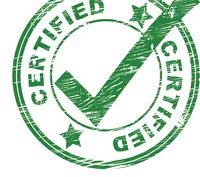
Lead Image © Stuart Miles, 123RF.com
Getting a free TLS certificate from Let's Encrypt
Certified
Let's Encrypt [1] is an open-source project with the goal of making sure every website is encrypting with TLS. The Let's Encrypt project is sponsored by organizations such as Mozilla, Cisco, Akamai, EFF, gandi.net, and many more. The primary role of Let's Encrypt is to offer trusted and free TLS certificates for everyone. Users can even copy and integrate Let's Encrypt technology into their own networks, which means any website can now offer a encrypted option for no cost. On May 8th 2016, Let's Encrypt issued its one millionth certificate.
Building In Trust
Let's Encrypt requires that whoever requests a certificate must prove they control the website for which the certificate is intended. If you wish to receive the certificate for a website, the DNS entry for the domain must point to your IP address in DNS.
To request a certificate for http://www.hanscees.com, I had to run a script on the web server serving http://www.hanscees.com, asking the Let's Encrypt staging-server (LSS) for the certificate. The LSS asks the web server to present a secret file on a subdirectory of the website, checks it, and, if successful, hands over a certificate file. See the Let's Encrypt website for additional information [2].
You can use Let's Encrypt for any website regardless of the web server. For my home-grown sites, I use one ESXI VMware server and deploy pre-installed virtual machines using TurnKey Linux [3], a Debian-based series of pre-configured Linux application hosts. Deploying a new website takes me about 10 minutes.
To secure websites running on Joomla or other web-based applications, I use a front-end reverse-proxy. I
...




